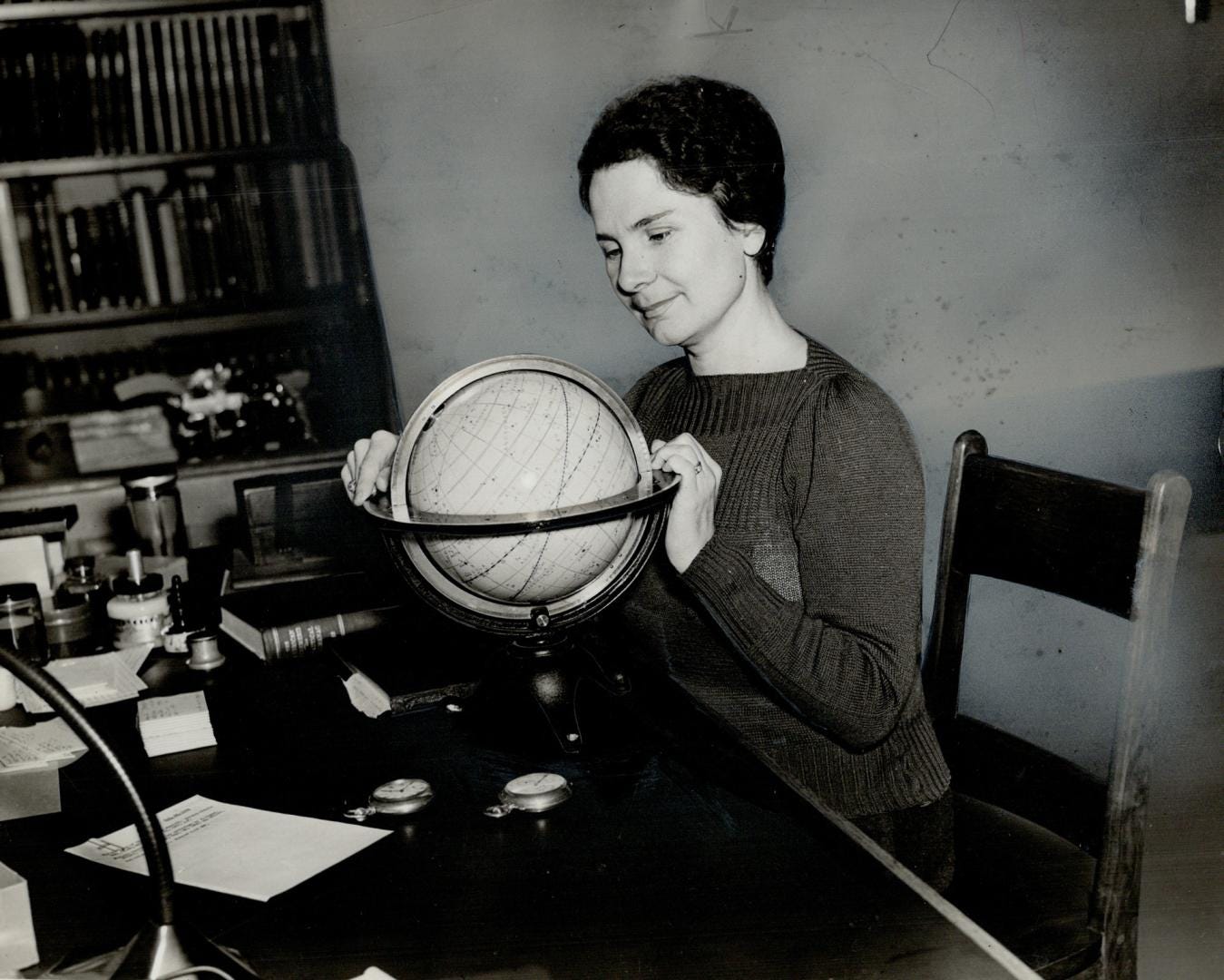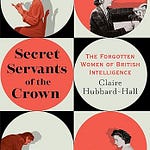"During the thousands of years that man has walked upright on this earth, he has looked up with admiration at the beauties of the heavens around him. For less than four centuries of this vast time he has had the advantage of a telescope to help him interpret the lights in the sky. Although the telescope has added enormously to our understanding of the heavens, we should not make the mistake of thinking that we must always have one at hand to enjoy the sky. On the contrary, I hope that this book will show that anyone can follow the beautiful and interesting events in the sky without a telescope. For the stars belong to everyone," Helen Sawyer Hogg wrote at the beginning of her book, The Stars Belong to Everyone.
The saying represented Helen's philosophy that astronomy should be shared, celebrated, and accessible to all.
Helen's path to the stars, however, began unexpectedly. On January 24, 1925, she was an undergraduate chemistry student at Mount Holyoke College when her astronomy professor arranged a trip to see a total solar eclipse. "The glory of the spectacle seems to have tied me to astronomy for life, despite my horribly cold feet as we stood almost knee-deep in the snow," she later wrote. It was a single moment, but history so often pivots on these fleeting encounters that reshape a life forever.
The following year, Helen met Annie Jump Cannon, a well-known astronomer at Harvard and a member of an all-female group of computers who were changing society's understanding of the stars. Annie offered to help Helen, setting her up with a faculty member for a Ph.D. program in astronomy at the university.
At Harvard, Helen met Frank Scott Hogg, a fellow astronomy graduate student. The two married in 1930. Shortly after, Frank became Harvard's first Ph.D. graduate in astronomy. Helen followed shortly after. Then, the couple moved to Canada, where Frank had secured a position at the Dominion Astrophysical Observatory in Victoria, British Columbia. It was there that they began a family.
For Helen, these early work and married life years were spent doing her research, often unpaid, as she watched their children. The couple's first child frequently came to the laboratory with Helen. Yet despite all the responsibilities, she began conducting groundbreaking research.
Helen specialized in studying variable stars, which are stars whose brightness changes over time, in globular clusters. Globular clusters are dense, spherical collections of ancient stars, which orbit galaxies like the Milky Way. The research was important because variable stars serve as “cosmic yardsticks” as their brightness changes in predictable ways. By measuring their light variations, astronomers can determine the distances to these stars and their clusters. And as a result, provide insight into the age of the universe.
As Helen's stature grew, additional opportunities came about. In a time when women rarely published, Helen began writing a column for a newspaper and then her book. Helen would be instrumental in bringing astronomy to everyday people. But she would also be instrumental in helping Canada become one of the world's leaders in astronomy research.
Still, Helen did have to deal with the pervasive social expectations for women at the time. In one magazine profile, the writer wrote about Helen: "Even if her mind is in the sky, Dr. Hogg keeps her feet on the ground. She runs the house for her husband and three kids, collects stamps, makes bedspreads."
Such statements only fueled Helen's belief in opening more doors for women in science. But her passion for people taking part in astronomy was for everyone. As Helen said in her later years, "Not to know what's beyond is like spending your life in the cellar, being completely oblivious of all the wonderful things around us.”
Sources:
Broughton, Peter and Clement, Christine. "Helen Sawyer Hogg 1905 - 1993." The Journal of the Royal Astronomical Society of Canada, https://articles.adsabs.harvard.edu/pdf/1993JRASC..87..351C
LaFollette, Marcel C. “Eyes on the Stars: Images of Women Scientists in Popular Magazines.” Science, Technology, & Human Values, vol. 13, no. 3/4, 1988, pp. 262–75. JSTOR, http://www.jstor.org/stable/689935. Accessed 16 Dec. 2024.
Pipher, Judith L. “Helen Sawyer Hogg (1905-1993).” Publications of the Astronomical Society of the Pacific, vol. 105, no. 694, 1993, pp. 1369–72. JSTOR, http://www.jstor.org/stable/40680202. Accessed 16 Dec. 2024.
Sawyer Hogg, Helen. The Stars Belong to Everyone: How to Enjoy Astronomy. United States, Doubleday, 1976.
Stille, Darlene R.. Extraordinary Women Scientists. United States, Childrens Press, 1995.
"The Stars are in Her Eyes":
Toronto Star Archive, https://digitalarchive.tpl.ca/objects/276864/ever-heard-of-a-star-atlas













Share this post